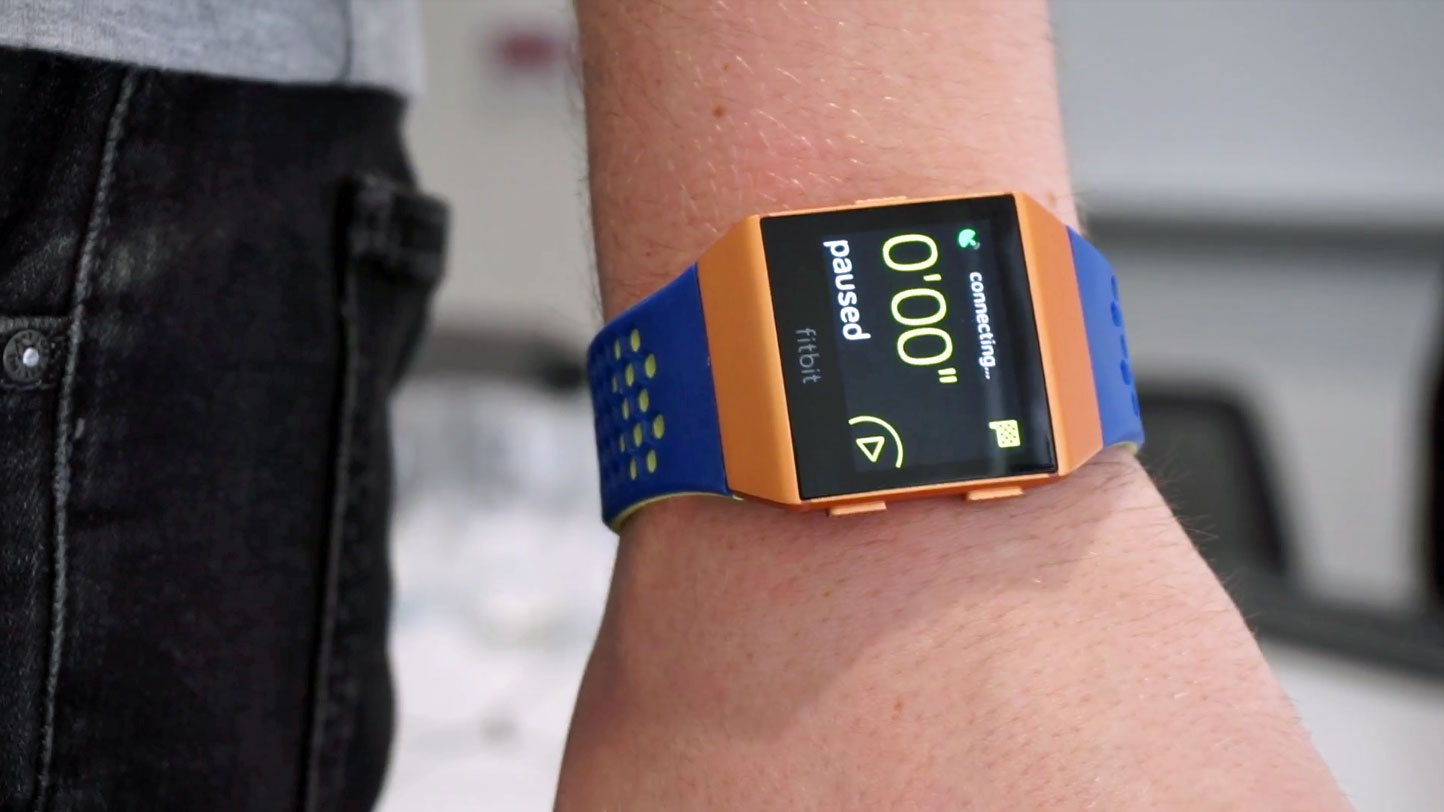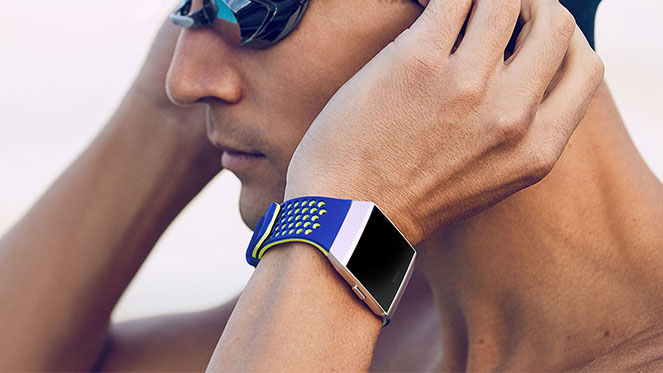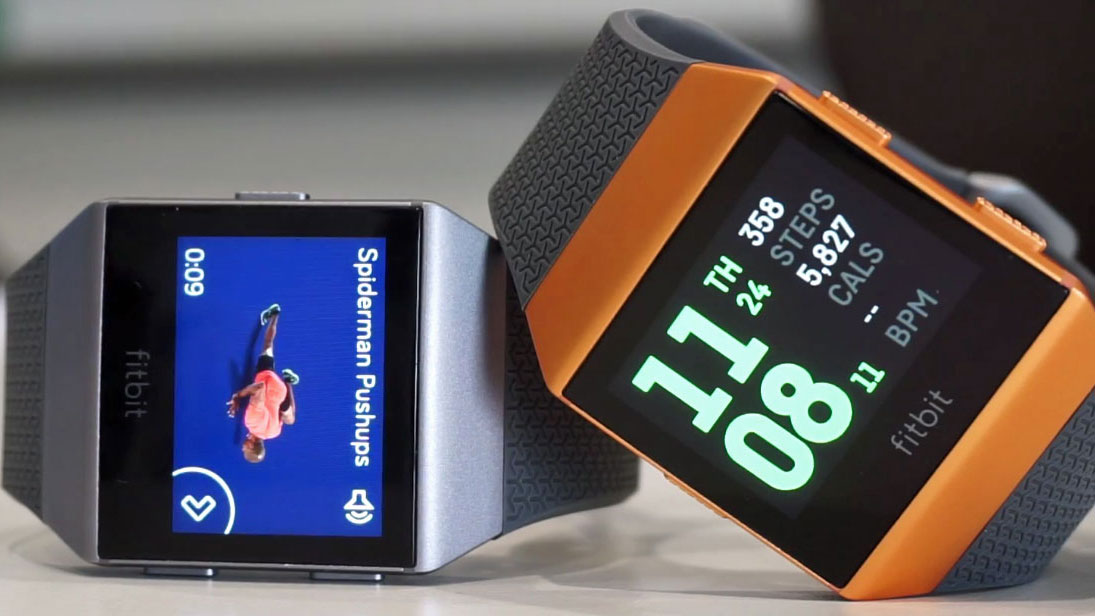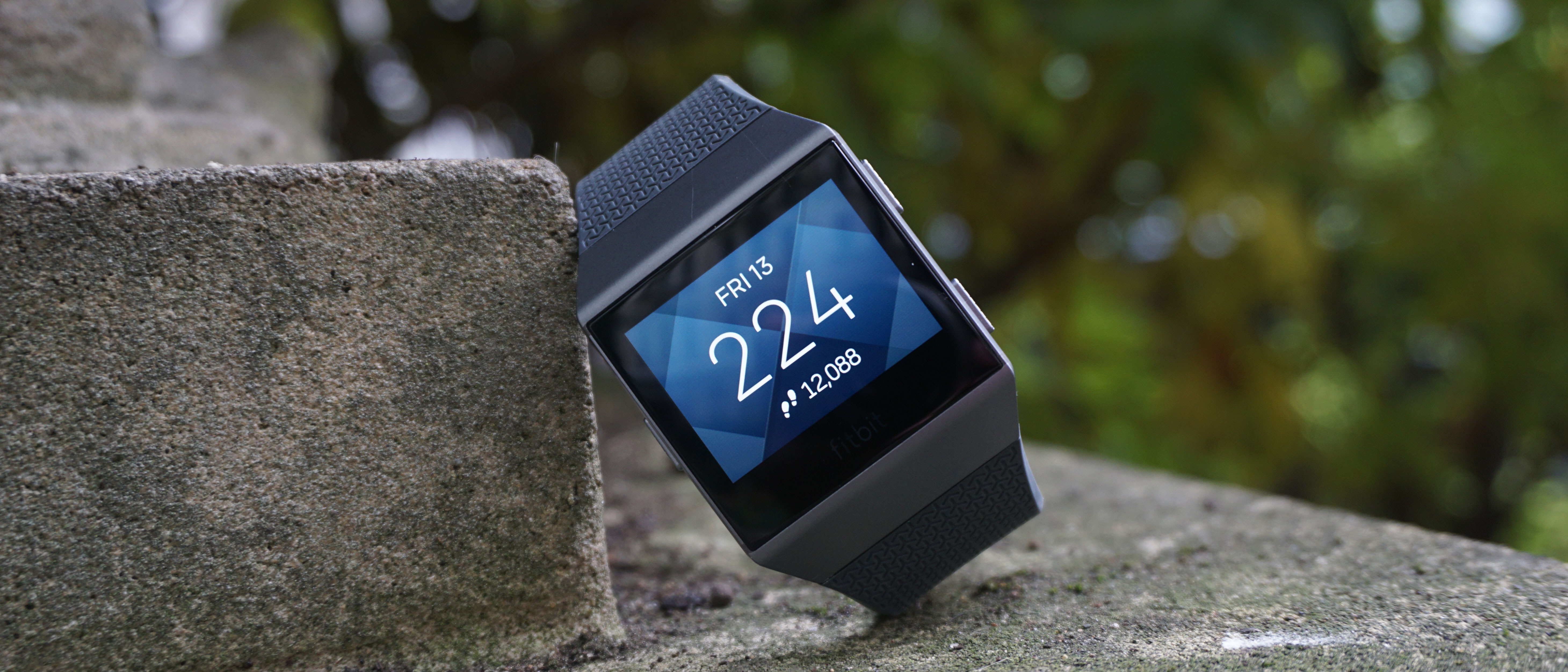Why you can trust TechRadar
Fitness features
- Suitable for running, cycling, swimming, weights and much more
- Comes with in-built workouts that you can follow on the watch
- We love the built-in GPS and heart rate monitor
All of the fitness features we’ve come to know and love on other Fitbit products are here, and there are a few upgraded elements too.
The Fitbit Ionic features a heart rate tracker, which according to the company is even more accurate than on other Fitbits thanks to shiny new algorithms behind the scenes and a design that means it sits much closer to the skin.
We found it worked much quicker than on previous Fitbit products, and in our testing we found it to be as accurate as other trackers and watches on the market. This is particularly useful for exercising, and Fitbit will use your heart rate for a lot of the information that’s displayed in its workouts app.

There’s built-in GPS here too, and Fitbit reckons your connection should be better than on the Fitbit Surge as the antenna bands are placed in optimal positions to ensure a better tracking connection.
Connecting to GPS sometimes took a little longer than we’d have liked, but we never lost connection while running or walking. Being able to look through your data after you’ve been on a long run or ride is a big feature too.
New features for running include an automatic pause option, which will notice when, for example, you’ve stopped to cross at some traffic lights and pause your workout, then restart when you begin exercising again.
Fitbit has also included workouts in its Fitbit Coach feature that is accessible from the watch and will offer a similar service to the Fitstar app you can download on your phone.

These are tailored workouts that will show you exactly what to do, and every time you complete one you can supply feedback so Fitbit Coach can work out whether you need something easier or harder next time.
The aim here is to help you improve, and while it seems like quite a basic system it should encourage you to try different types of exercise.
Fitbit plans to also bring audio workouts to the Ionic – and they can’t come soon enough, because it’s a big missing feature here. When trying out workouts within the Coach feature, we found ourselves rushed to get onto the next part.
For example, it’ll start you off with 12 push-ups and give you a buzz on your wrist when you’re done, then tell you your next workout position and give you nine seconds to get ready.

Without an audio cue, you have to look at your wrist, study the form of the workout and then be ready to start, all within nine seconds. When you’re sweating and gasping for breath, we often found this was nigh on impossible.
Fitbit has also included an SpO2 sensor here to monitor blood oxygen levels, however, as of November 2018 the feature still hasn't been enabled, though the company claims to be working on it.
We also now know the Fitbit Ionic is set to be a useful device for those with diabetes. If you pair the watch with a Dexcom G5 Mobile sensor (a specialist device that costs $900 (about £690, AU$1,120) it'll be able to display your glucose levels so you can monitor them.
It's an interesting concept, and it could make the Fitbit Ionic a must-have device for those with diabetes.

The Fitbit Ionic has 5ATM water resistance (50m) and is easy to wear in the water and the sheer number of spacing holes on the strap mean it stays put even on smaller wrists. So you're all set for swimming.
As with other sport specific features, how useful this is will depend on whether you're a serious swimmer or someone who takes a more casual approach to getting wet for general fitness.
If you're the latter, then the Fitbit Ionic’s simple, easy-to-use interface and length, distance and pace tracking should prove more than sufficient for your tracking needs. The fact that the app shows your swim in terms of your overall daily fitness goals is also a nice touch.
If, however, you’re a competitive swimmer then you’ll find Fitbit’s first smartwatch somewhat on the basic side and you might be better off with an alternative swimming watch.
There’s no way to input drills – so a length of kick won’t register, for example – and because there’s no automatic stroke detection, changing stroke in the middle of a length can lead to data registering incorrectly.
Swim tracking is self-explanatory; choose 'exercise' from the apps, swipe to swim (yes, swiping worked surprisingly well in the water) and go.
It's easy to input the length of the pool, and the fact that the screen stays off unless you’ve set a cue – showing you distance, laps and time every 100m for example – is beneficial, as a flashing screen entering your eye line when you’re doing your best Phelps impression can prove distracting.
The Ionic can automatically recognize different exercises, including swimming, so if you do forget to press go you’re sorted.
When it come to accuracy, however, the Ionic swam into tricky waters. Despite inputting the pool length as 25m, we got readings of 8 lengths as 100m and 22 lengths as 450m instead of 550m.
Though, Fitbit say that some inaccuracies may come from shorter swims, stopping to rest in the middle of the pool and stopping for more than 60 seconds at the end of a length (which we probably did when trying to work out why the 100m cue we’d set didn’t go off after four lengths).
Performance and battery life
- Battery life lasts for four to five days from a single charge
- Some menus take a long time to load and can be frustrating when exercising

The exact internals of the Fitbit Ionic are a little unclear, and we don’t expect to know much about what’s running under the hood. In our testing, however, we found that the Fitbit Ionic user interface can be a little slow at loading.
For example, setting up a workout can take quite a long time compared to other competing devices, and it can also be frustrating when you want to get accurate fitness readings. We haven’t found that apps crash while using it though.
We found that the Fitbit Ionic’s battery lasted between four and five days with limited usage. If you’re going to be working out a lot with the watch it’ll be a lot less, and the battery gets hit especially hard when using GPS.
Fitbit estimates it lasts for 10 hours of constant GPS tracking, and we think that’s about right – and it’s still around the same amount of time as your average running watch is able to last for.

You can also upload music to the Fitbit Ionic, with 2.5GB of free space at your disposal. That’s not much, and will only allow for around 300 songs, but if you have particular audiobooks, podcasts or albums you're always going back to there should be space for some of them here.
You can then connect Bluetooth headphones and listen to music on the go without having to take your phone on your run.
We found the Bluetooth connection remained stable, but it’s irritating that you can’t integrate some of the most popular streaming services, such as Spotify or Apple Music, to download any music you want easily.
In the US you can connect the watch with Pandora - something we haven't been able to test yet - and you can also connect it up around the world to your Deezer account too. We'll be sure to update this review when we get the opportunity to test the new feature.
If you're not a subscriber to those services, you have to own the files and upload them manually using a computer. That all feels a touch too complicated, and it encouraged us to just take our phone out on the run instead.
Apps and compatibility
- Works on iOS, Android and Windows Phone devices
- You'll need to be able to download the Fitbit app from your phone's app store
- Fitbit's App Gallery is currently limited, hopefully will improve soon

The Fitbit Ionic will work alongside the Fitbit app on your phone, which is compatible with most modern iOS and Android devices.
The Ionic comes with its own App Gallery – Fitbit is insistent this isn’t an app store – that includes Fitbit’s own services as well as third-party apps. So far we've seen third-party apps from Strava, Starbucks, Philips Hue, The New York Times, Flipboard, Yelp and more.
It's still a limited set of apps compared to watchOS, Wear OS and even Tizen, but we hope to see the App Gallery expand further especially now the Fitbit Versa supports these too.
- Best Fitbit apps and watch faces: what to download for your Fitbit smartwatch
At launch everything on the Fitbit Ionic App Gallery was free, but there may be paid-for alternative apps at some stage in the future.
You can also choose a variety of watch faces within the Fitbit app, and there are currently lots of good choices. We hope the selection will be expanded in the future though, as there still aren’t as many options as you can get on alternative wearables.
Personalization isn’t possible here either – it would be nice to have the option to add different widgets to your prefered style of watch face. We have high hopes this will happen eventually, especially as it was a big focus for Pebble wearables in the past.
Fitbit has included mobile payments on the Ionic through its own service called – you guessed it - Fitbit Pay. This is based on tech from a company called Coin, which Fitbit bought a few years back, and will allow you to use NFC to pay on contactless terminals with your wrist.

Fitbit is partnering with Visa, American Express and Mastercard for this, but you’ll need to make sure your bank is offering the service. You can do that here on the official Fitbit website.
In our testing, we found the payment feature worked well but sometimes took a long time compared to some of the alternatives.
You hold down the button on the right-hand side of the Ionic for a few seconds to make a payment, and you’ll then need to enter a PIN that you’ve previously set up and place your Fitbit Ionic near to the reader.
It’s a very similar experience to either Apple Pay on the Apple Watch or Android Pay on Android Wear devices, and it’s especially useful if you need to grab a bottle of water when you’ve gone running without your wallet or phone.
It likely isn’t going to replace your wallet, but it’s a useful extra way of being able to make payments when you’re out exercising.
Current page: Fitness, performance and battery life
Prev Page Introduction, price and design Next Page Verdict and the competitionJames is the Editor-in-Chief at Android Police. Previously, he was Senior Phones Editor for TechRadar, and he has covered smartphones and the mobile space for the best part of a decade bringing you news on all the big announcements from top manufacturers making mobile phones and other portable gadgets. James is often testing out and reviewing the latest and greatest mobile phones, smartwatches, tablets, virtual reality headsets, fitness trackers and more. He once fell over.

